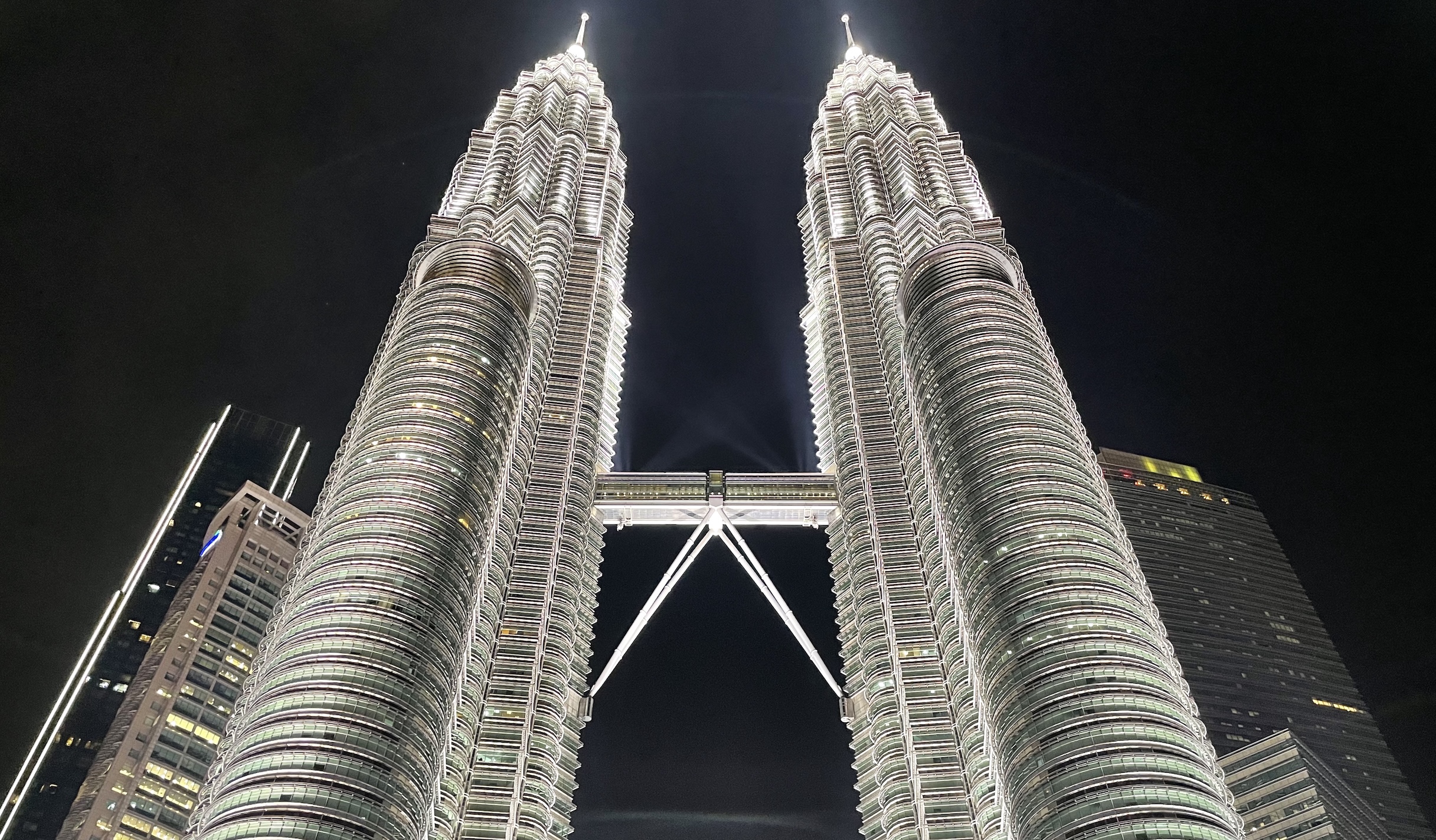
KUALA LUMPUR
Kuala Lumpur
After saying goodbye with a bit of nostalgia to the last lionfish swimming in the waters of the Mataking Island resort pier, we boarded the transfer that would take us back to civilization. We landed again in Semporna, and from there a private transfer took us to the hotel chosen to spend a night in Tawau. This city, unlike Semporna, was clean and tidy.
The next day we took a plane that took us straight to the heart of Malaysia: Kuala Lumpur. After leaving our luggage in our hotel, located in the Bukit Nanas neighborhood (i.e. the pineapple hill), we set off to explore the Malaysian capital.
Kuala Lumpur is a city that captivates you with its energy, diversity and beauty. A place where East meets West, where tradition blends with modernity.
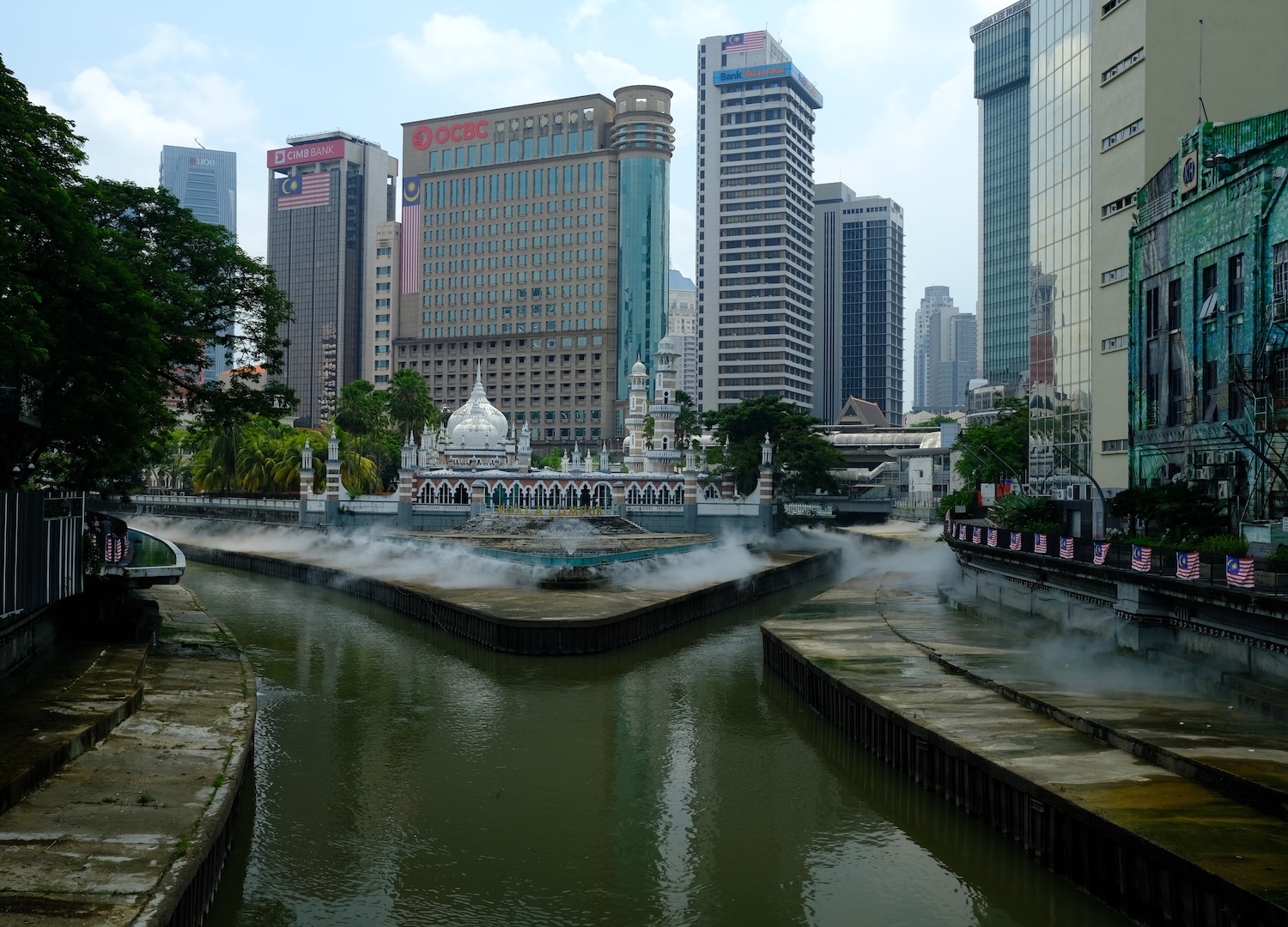
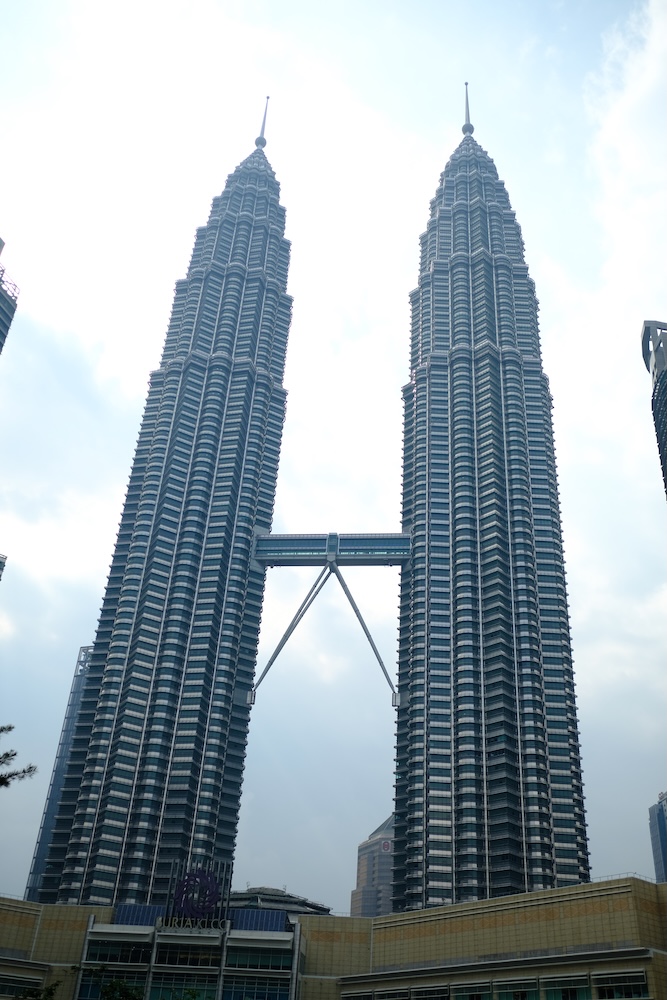
The first glimpses of the city immediately struck us. On the one hand, skyscrapers that defy the clouds, glittering shopping centers and a cosmopolitan atmosphere; on the other, colorful temples, traditional markets and an attention to greenery that surprised us.
Kuala Lumpur, in fact, is a city that knows how to perfectly combine urban development with nature. Lush parks, botanical gardens and green areas dot the landscape, offering its residents and visitors various oases of tranquility.
Walking through the streets, we breathed in the multi-ethnic air of the city. Malays, Indians, Chinese and Europeans coexist daily, creating a cultural melting pot.
The official language is Malay, but English is widely spoken, making communication easy.
The public transport system is efficient and widespread, with a network of trains, metro and buses that covers the entire city: for this reason we never had to take a taxi!
What to see in 4 days
On the first day, as soon as we arrived, we immersed ourselves in modernity. The geometries of Kuala Lumpur's skyscrapers are the result of careful design that combines aesthetics, functionality and meaning. These structures are not just buildings, but true works of art that help define the city's skyline and make it a fascinating destination for architects and design enthusiasts. The architecture of the Petronas T
win Towers is a masterpiece of engineering and symbolism. The plan of each tower is based on the Rub' al-Hizb, an ancient Islamic geometric figure that represents unity and harmony. This symbol has been reinterpreted in a modern key, creating an architectural icon that blends spirituality and technology.

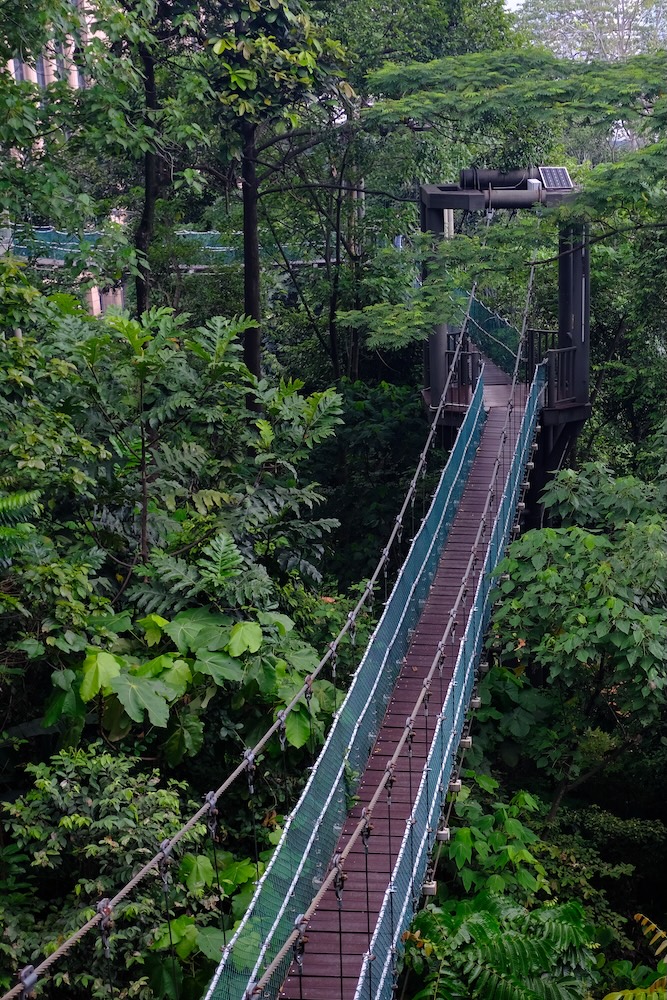
After exploring the KLCC Park, a green oasis at the foot of the skyscrapers, we visited the KL Forest Eco Park, a miniature jungle very close to the center. The walkways suspended between the trees gave us a different perspective on the city's buildings. To end the day, we treated ourselves to dinner at a delicious Thai restaurant. We still remember the flavor of the pad thai and the kindness of the staff.
The Batu Caves
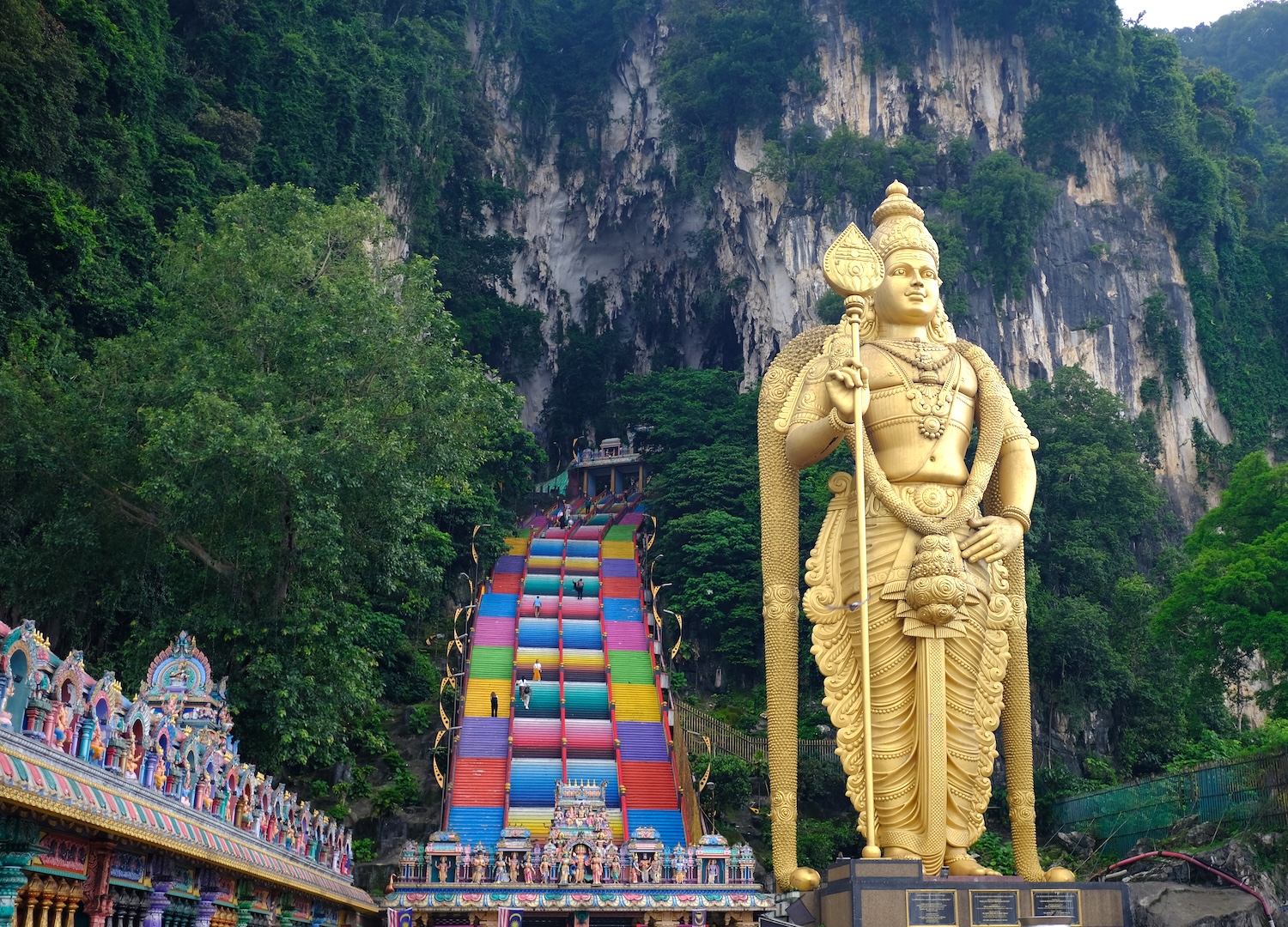
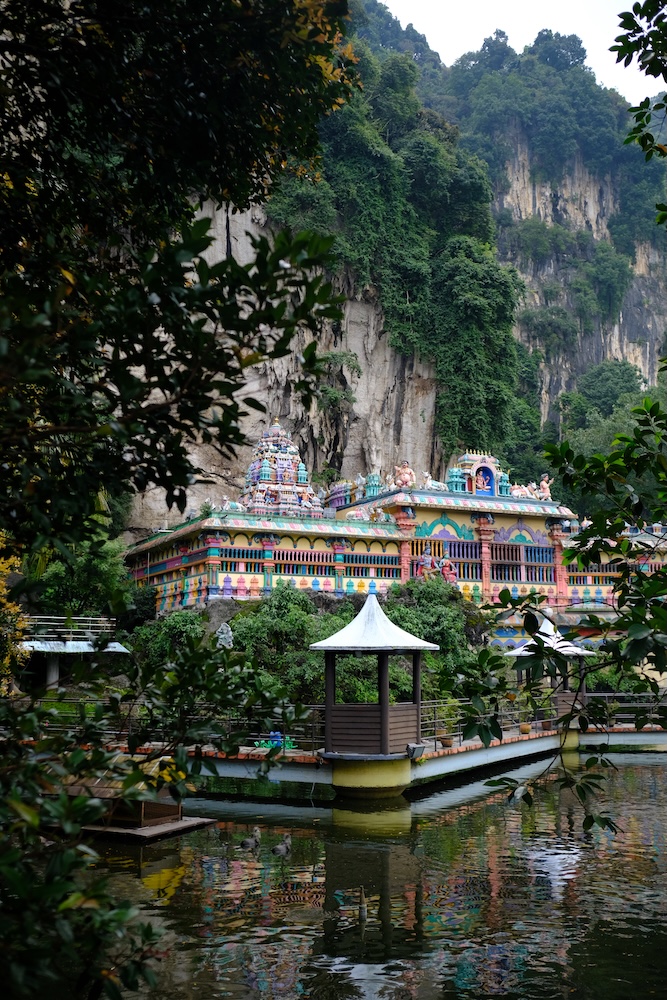
On the second day, early in the morning, we immediately headed to the famous Batu Caves. You can reach the square of the imposing golden statue of Murugan by crossing a lively market where street vendors offered fresh fruit, votive offerings and colorful souvenirs. The atmosphere was joyful and a little chaotic, with curious monkeys hopping between the stalls looking for food.
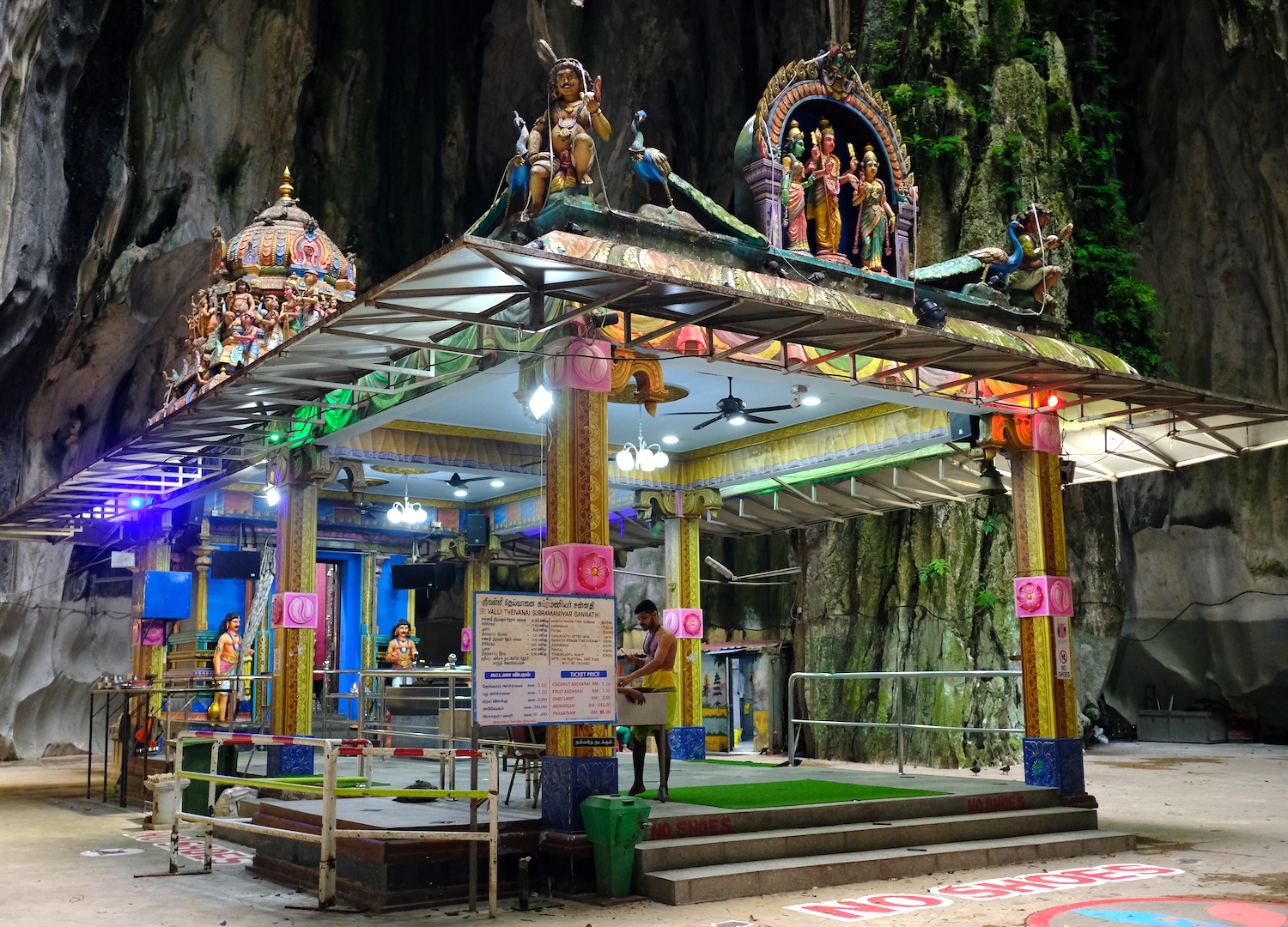
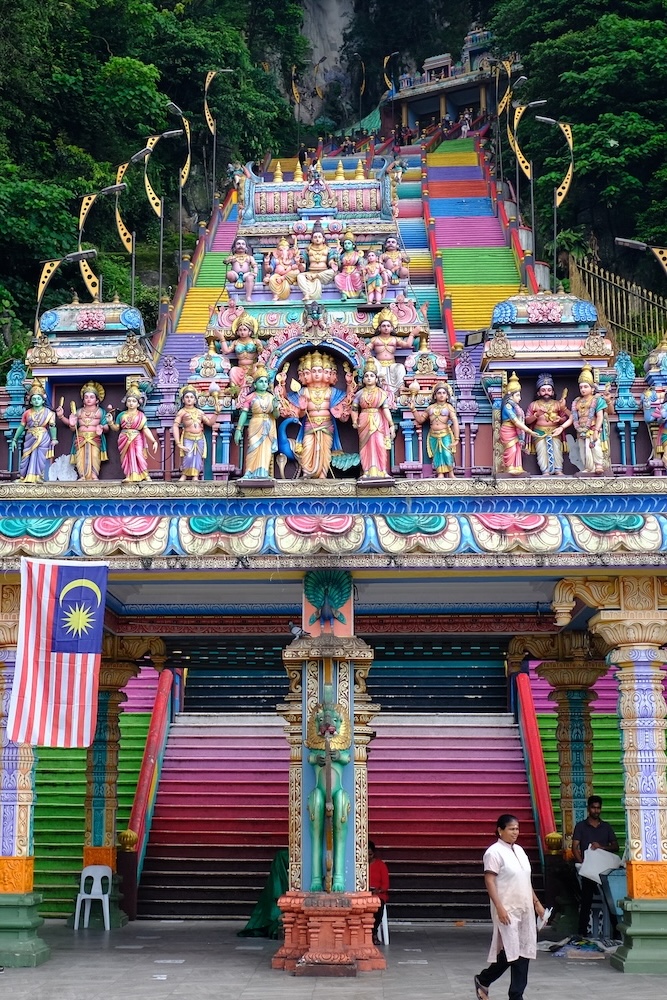
After taking some souvenir photos, we started climbing the 272 colored steps that led to the caves. Each step was a small step towards the spiritual heart of this place sacred to the Malays.
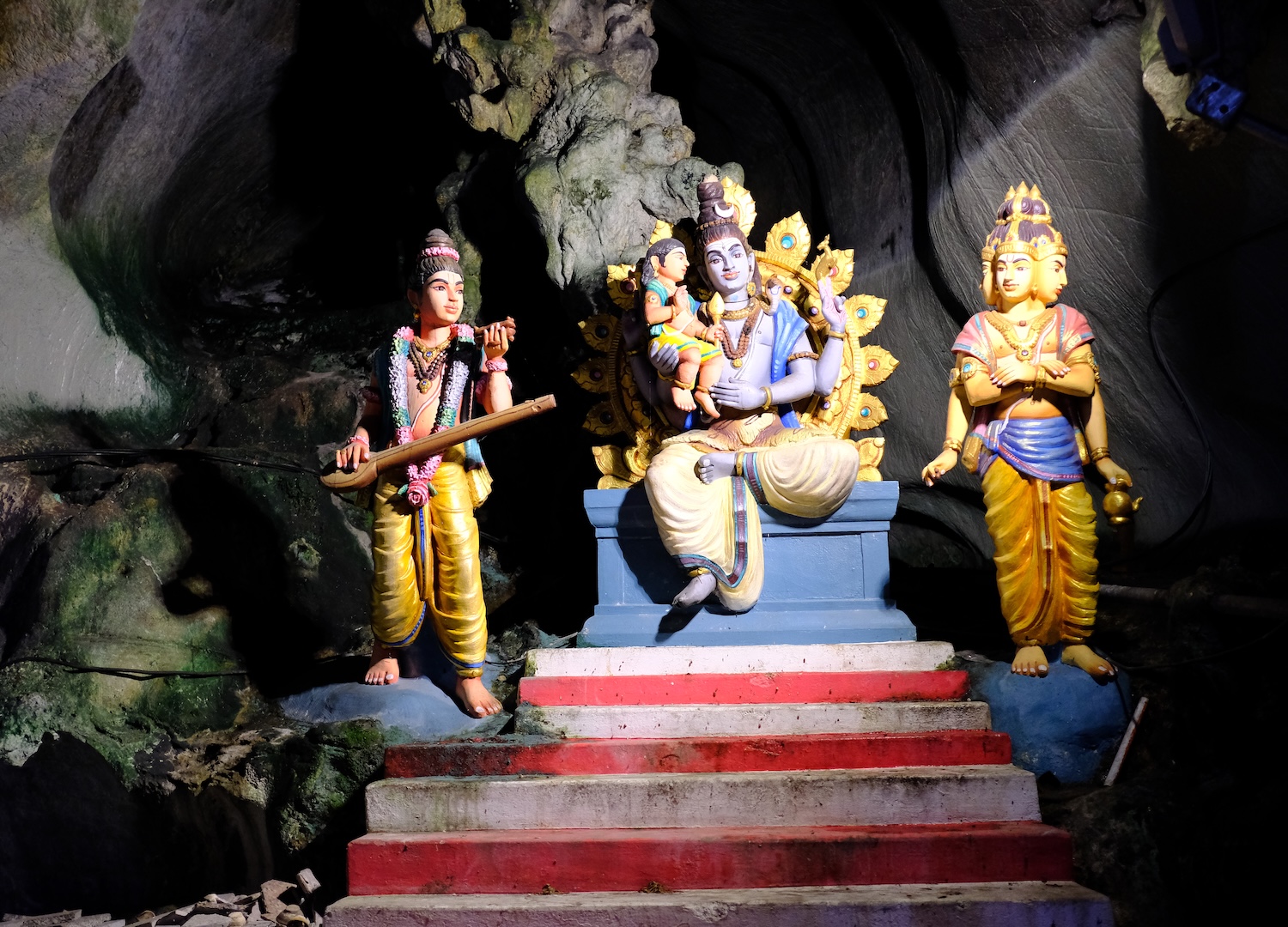
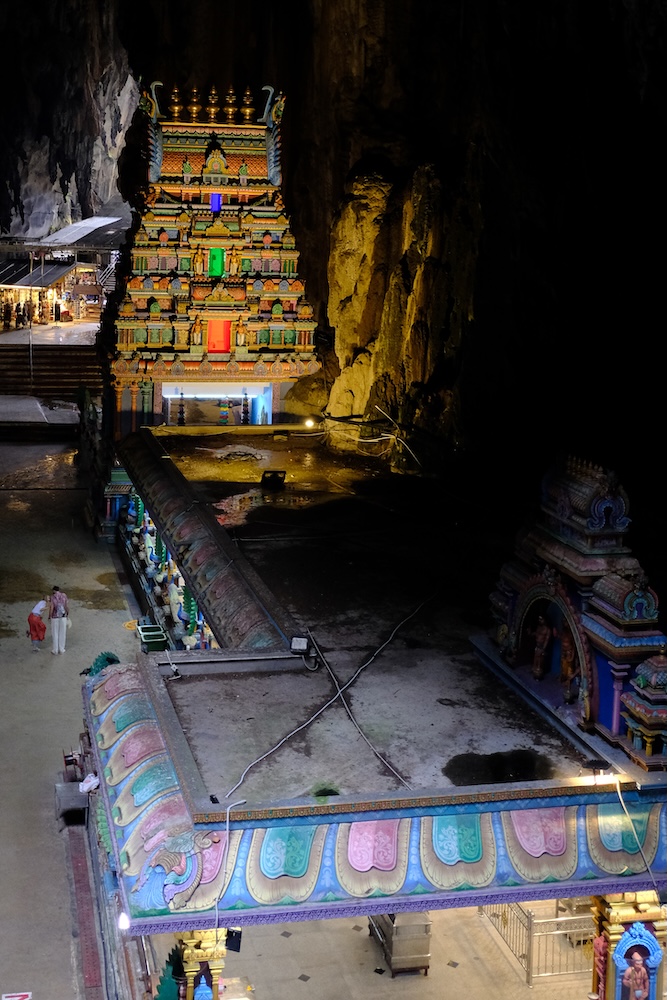
Once we reached the top, we found ourselves in a cave full of stalactites, stalagmites and large natural chambers. The walls of the caves were adorned with colorful paintings and sculptures depicting Hindu deities and mythological scenes. Small temples, each dedicated to a different deity, animated the caves, creating a mystical atmosphere.
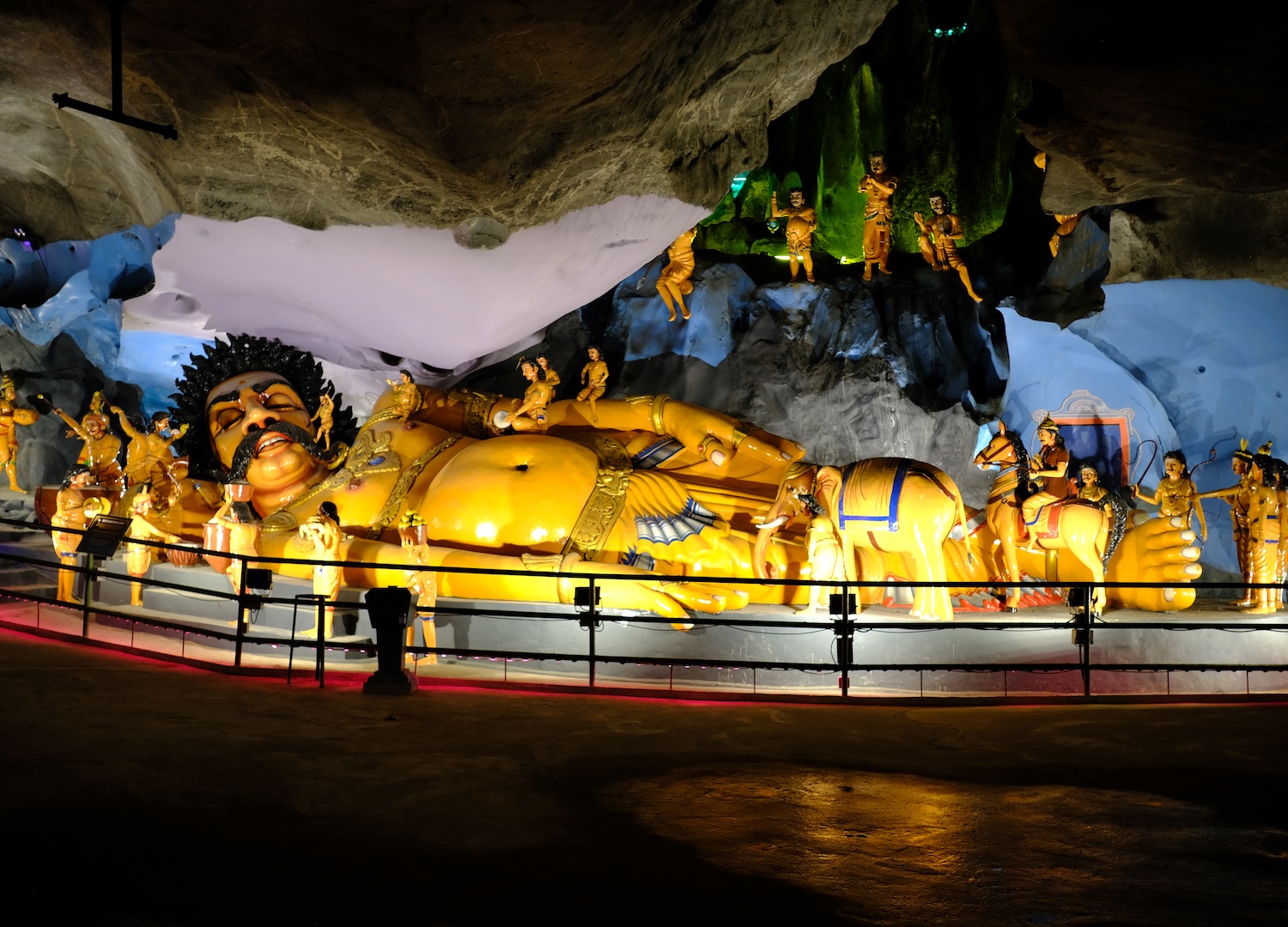
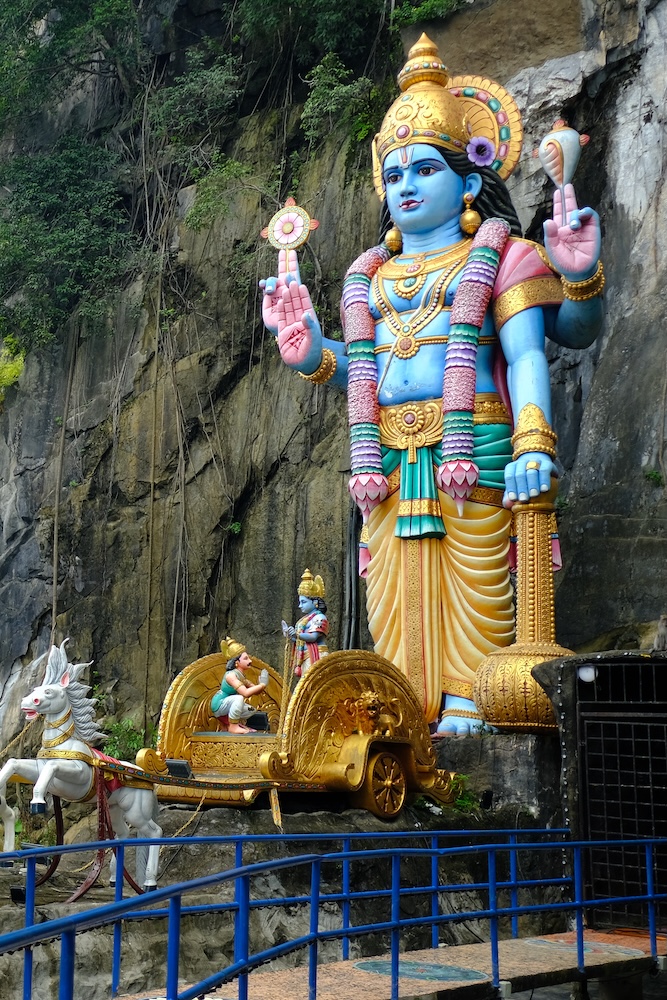
The Batu Caves took our breath away with their majesty and spirituality, but our adventure did not end there, because we discovered another hidden jewel: the Ramayana Caves - Suyambu Lingam.
Entering this cave, we were completely immersed in the stories of the Ramayana, the great Indian epic poem. The walls were adorned with lively paintings depicting the deeds of Prince Rama, his wife Sita and the valiant Hanuman.
China Town and the colonial area
We returned comfortably to the center by train. Once in the city, we decided to visit Chinatown, a kaleidoscope of colors and scents. Right there we found a restaurant where we enjoyed an excellent spicy lunch.
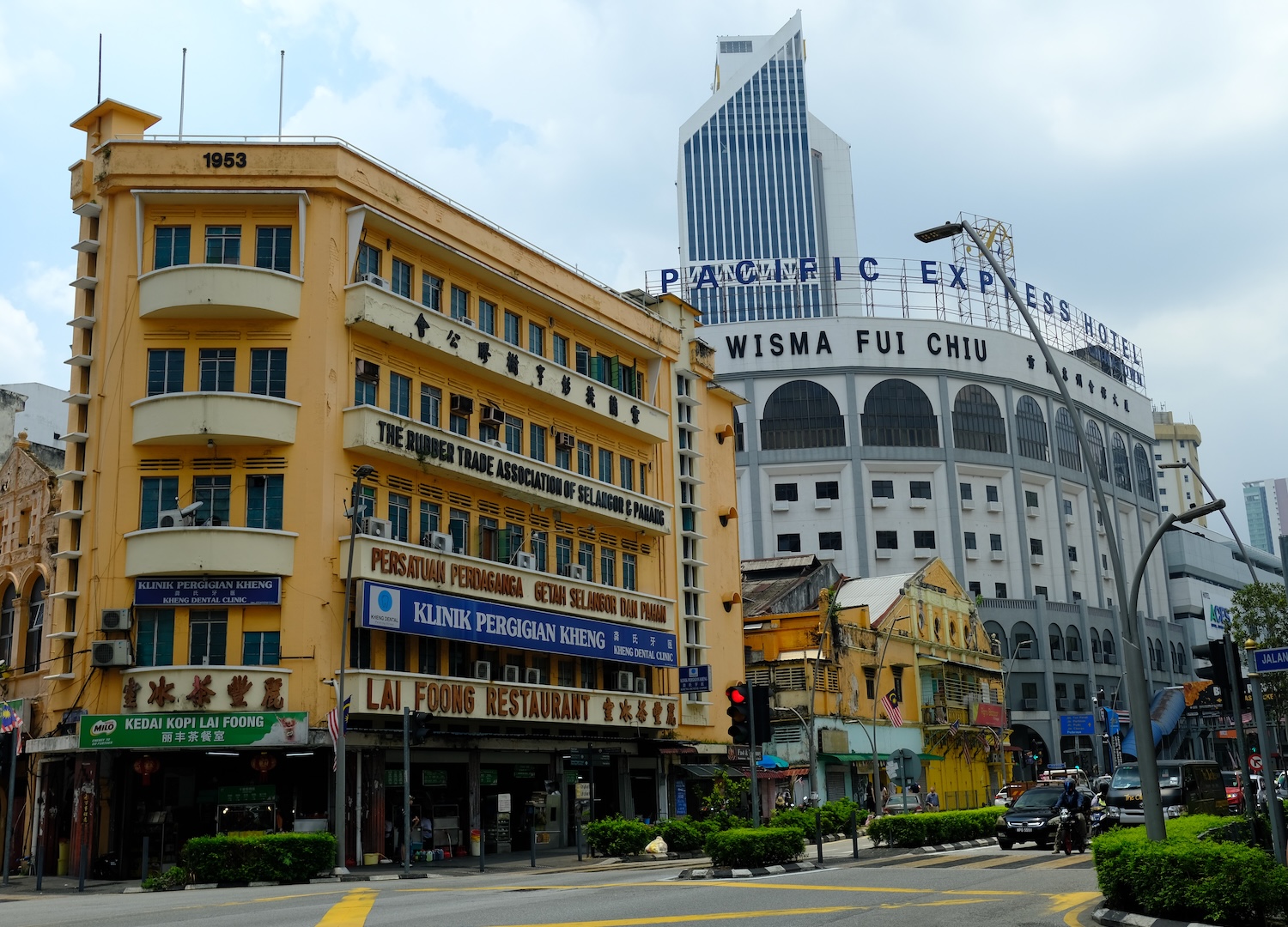

Walking through Chinatown you notice even more the imposing Merdeka Tower, now the second tallest skyscraper in the world. Its modern structure stands out against the background of traditional Chinese buildings, creating a particular contrast.
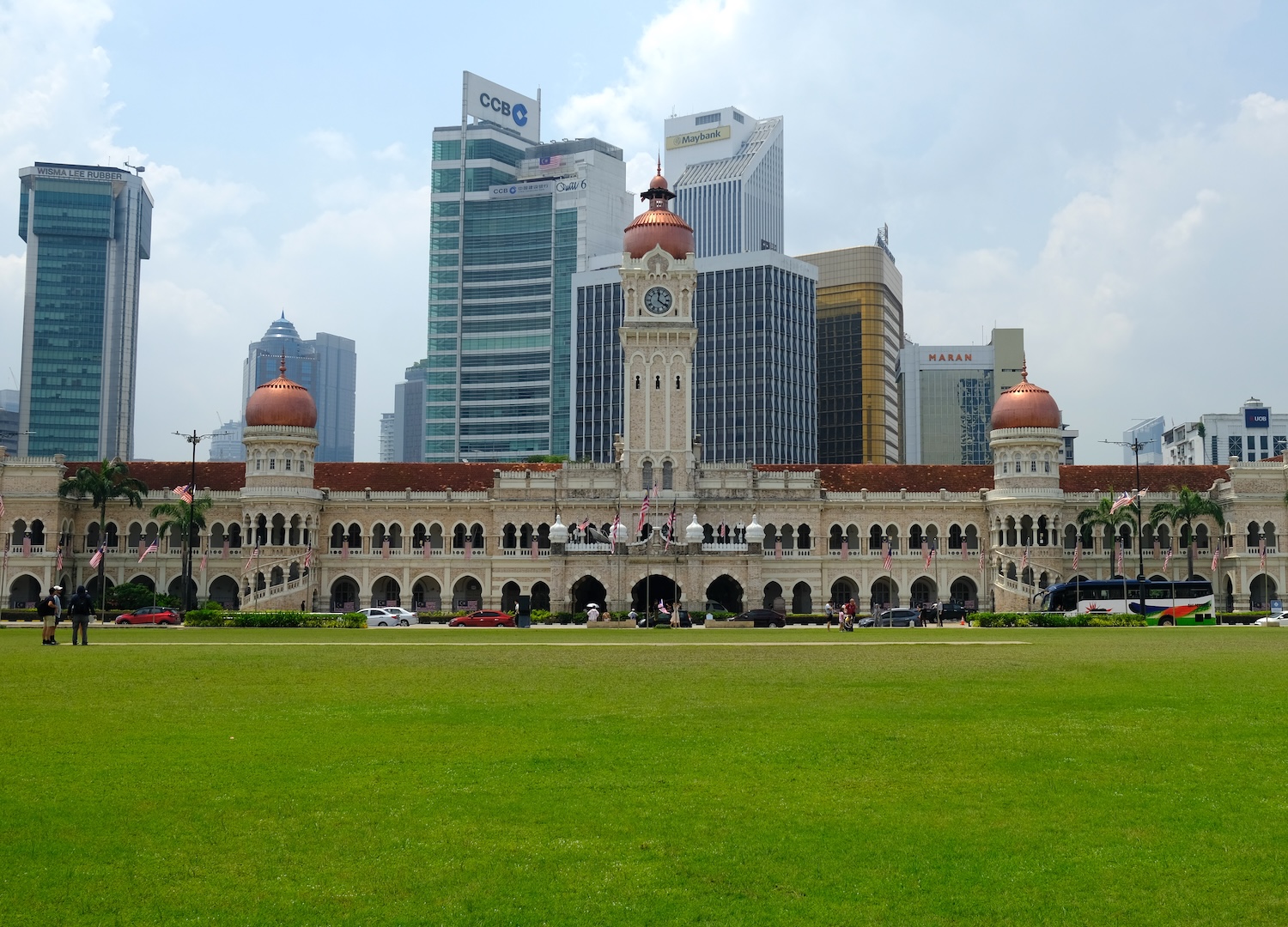
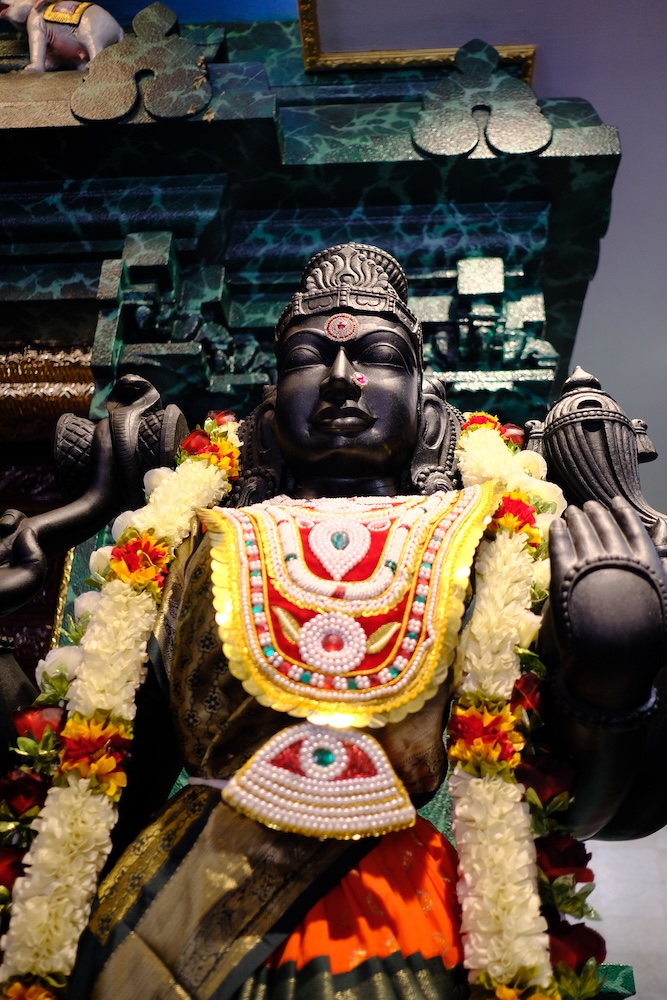
We then moved to the Parliament area, where we admired the colonial buildings that characterize this part of the city. The British-style facades, with their porticoes and columns, took us back in time a hundred years.
The Perdana Botanical Park and the Museum of Islamic Art
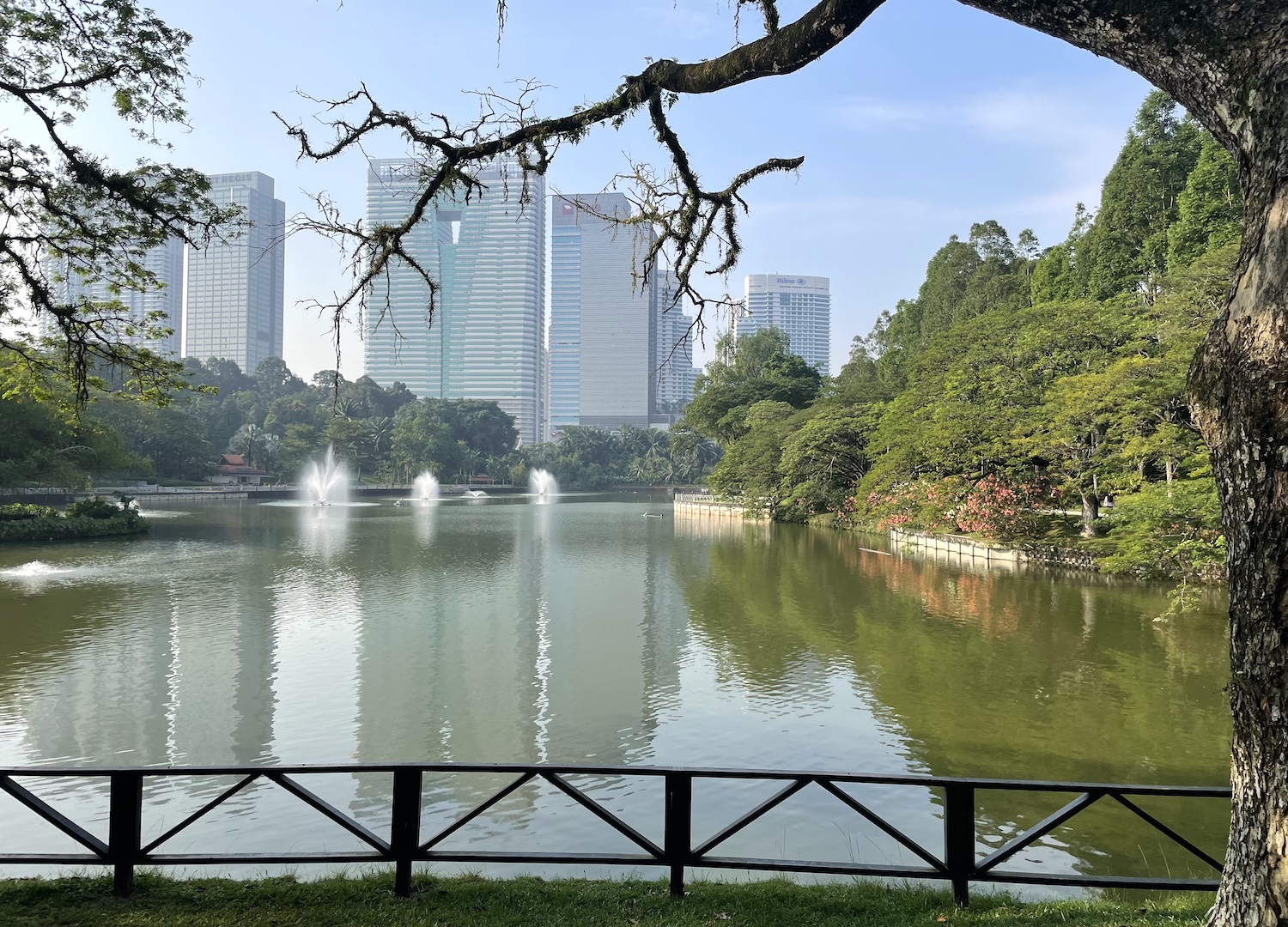
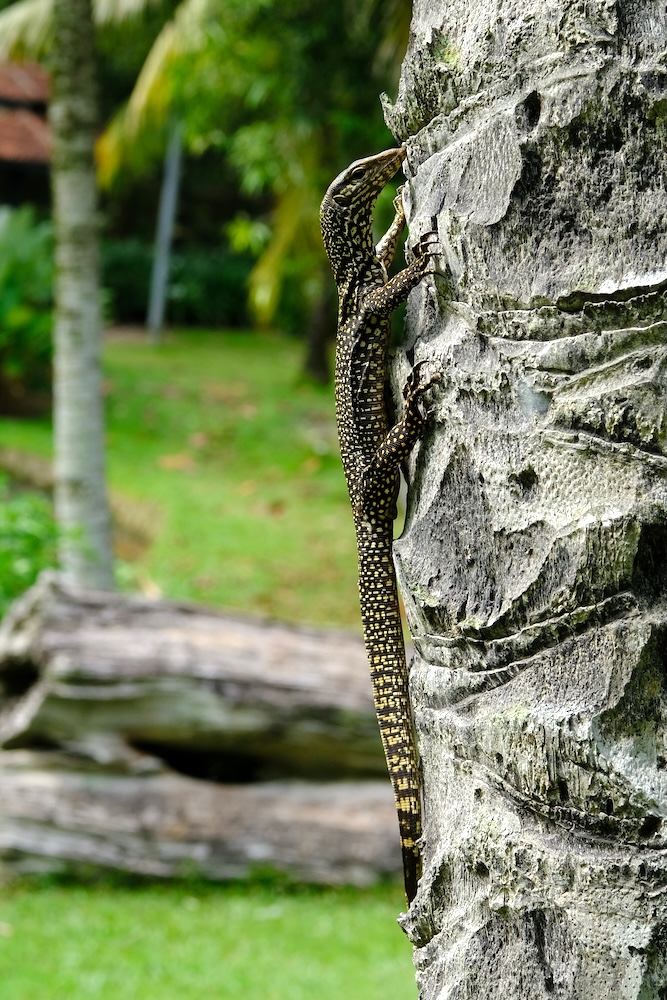
The next day we visited the Perdana Botanical Park. It is an oasis of peace in the heart of the city, where it is possible to walk among centuries-old trees, ponds and well-kept gardens. The calm and relaxing atmosphere that reigns recharges the energies of visitors and Malaysians.
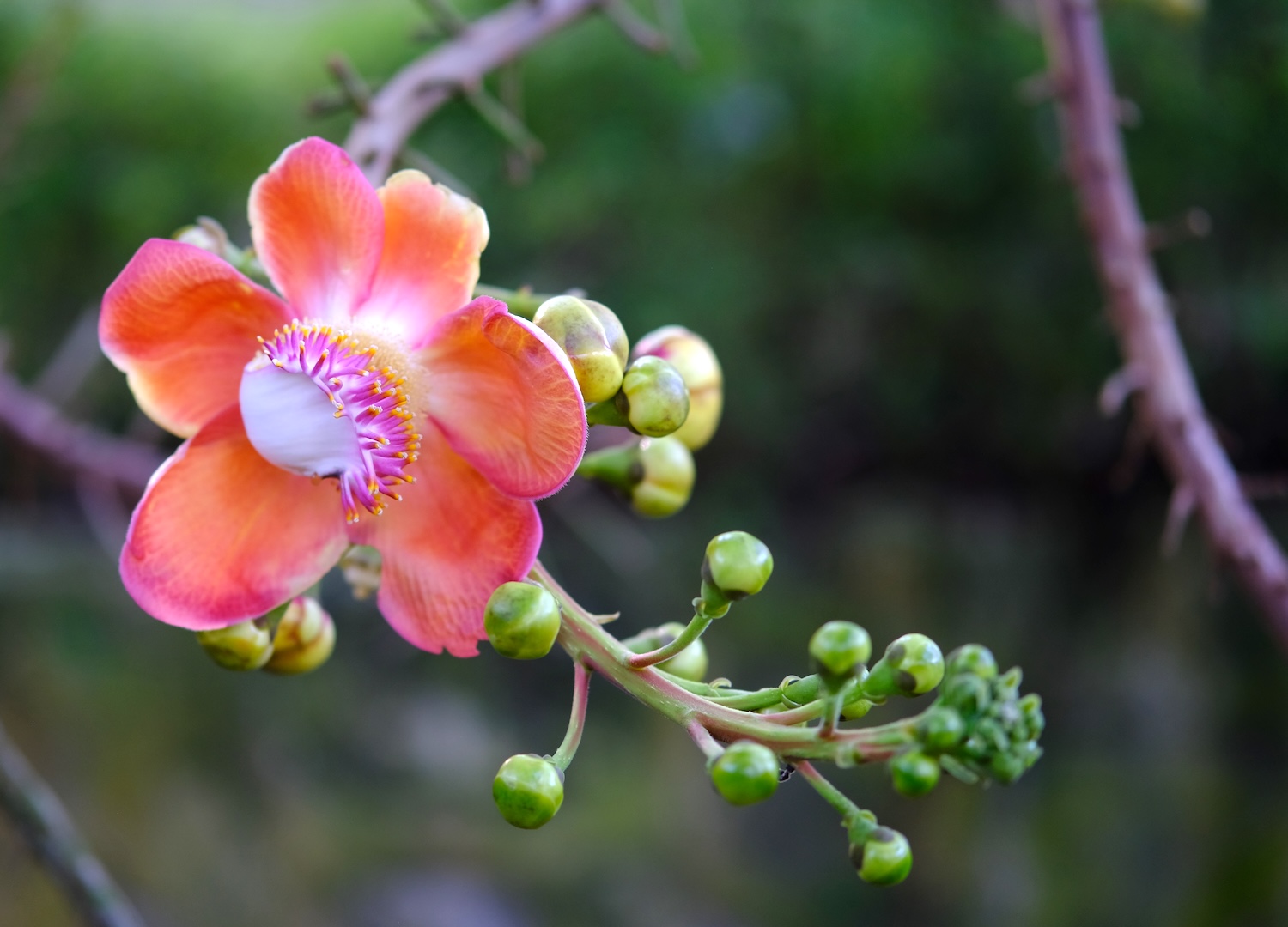
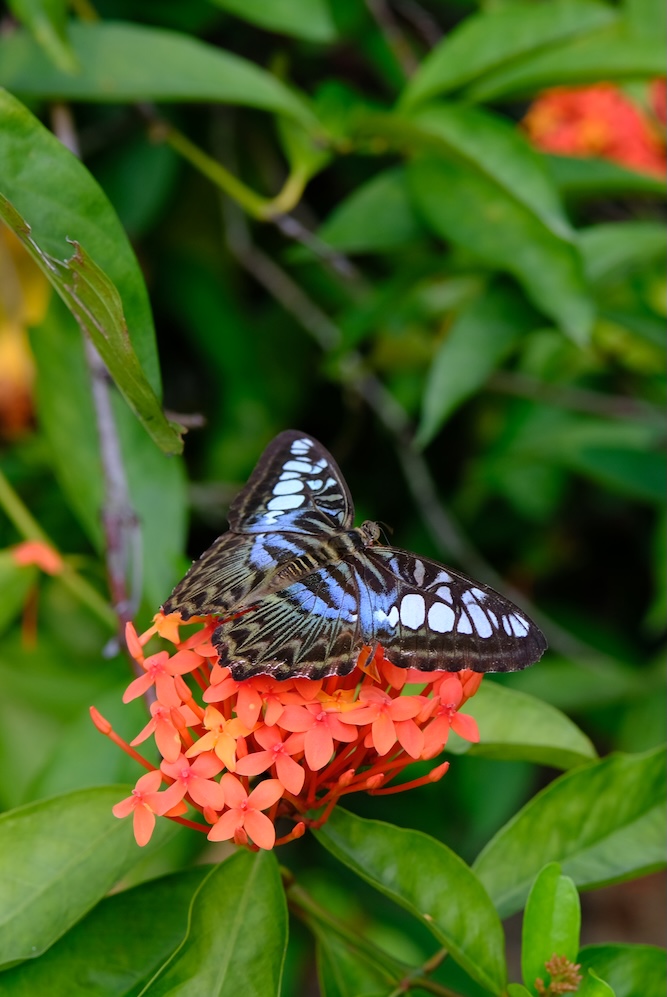
Afterwards we visited the Butterfly Museum, not far away. A fascinating experience! Hundreds of colorful specimens flew in an environment recreated to simulate their natural habitat, dotted with flowers and tropical plants. It was like diving into a flying rainbow.
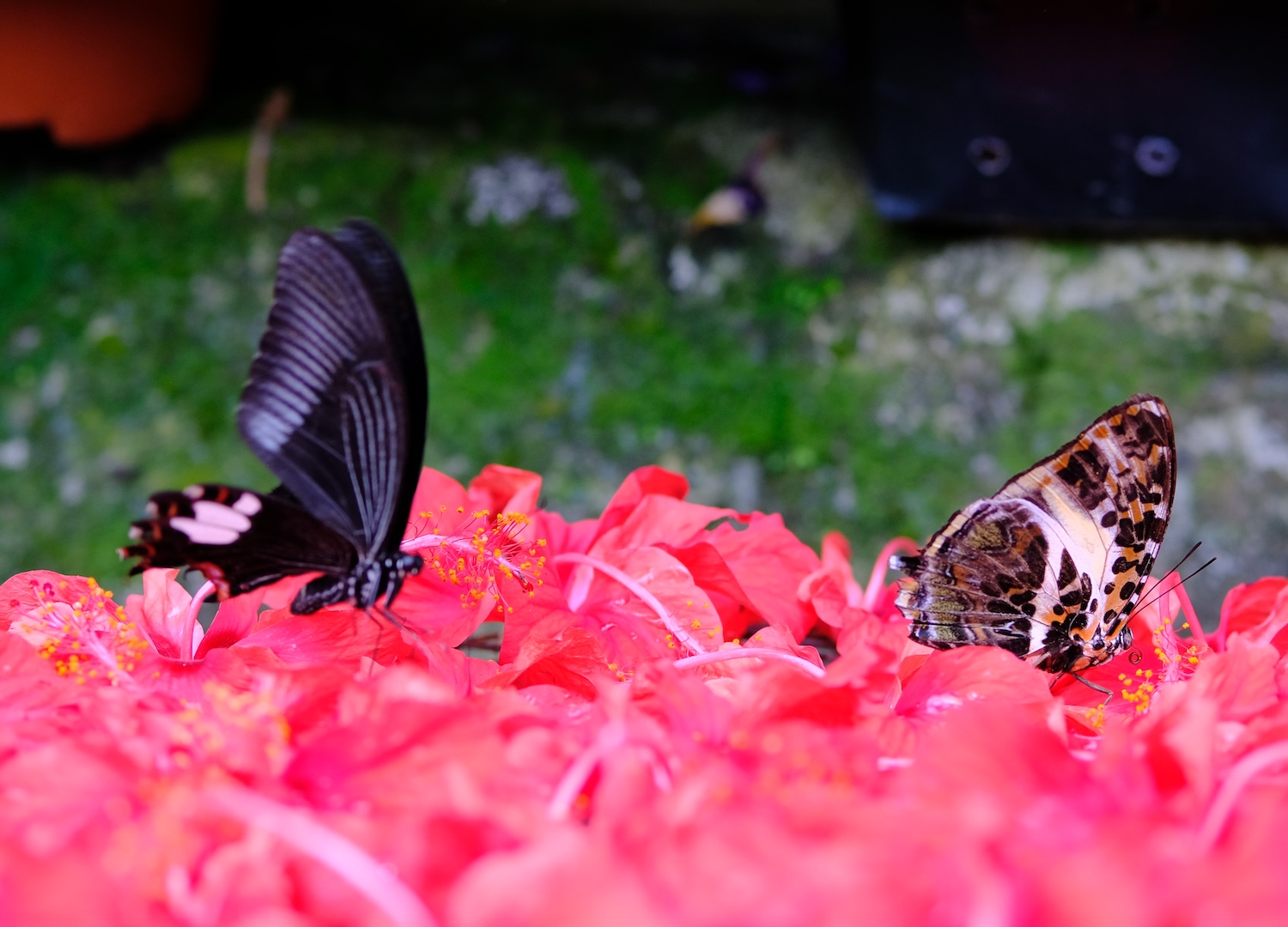
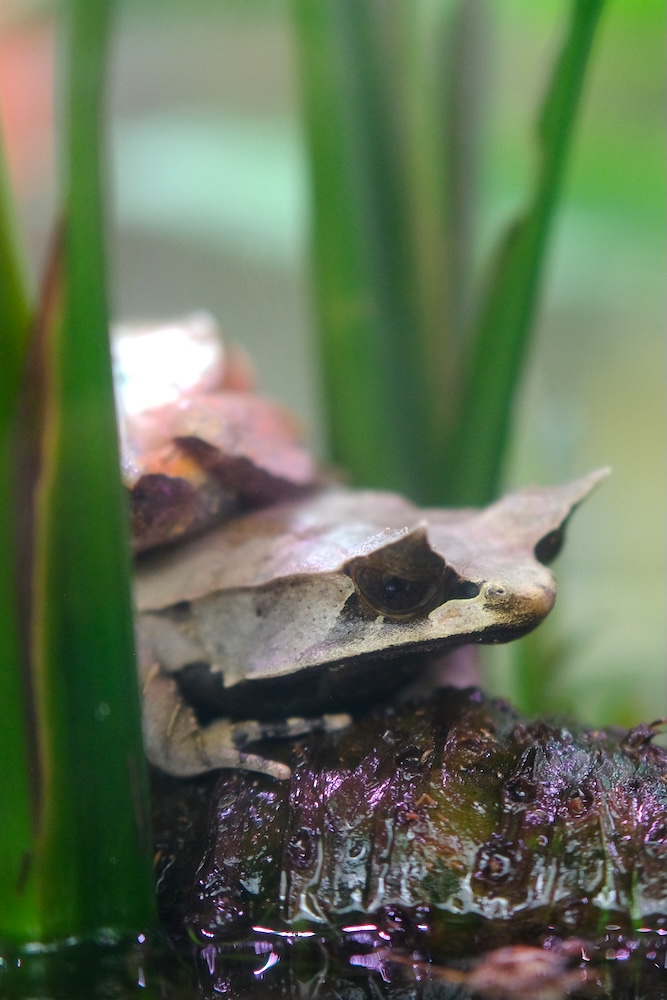
After an invigorating lunch, we moved on to the Museum of Islamic Art. It wasn't on the list of things to see in the city, but it was a pleasant surprise. The collections offered us a fascinating insight into Islamic art and culture: we admired intricate calligraphy, fine ceramics and fabrics decorated with geometric patterns.
The City Skyline from the Skybridge
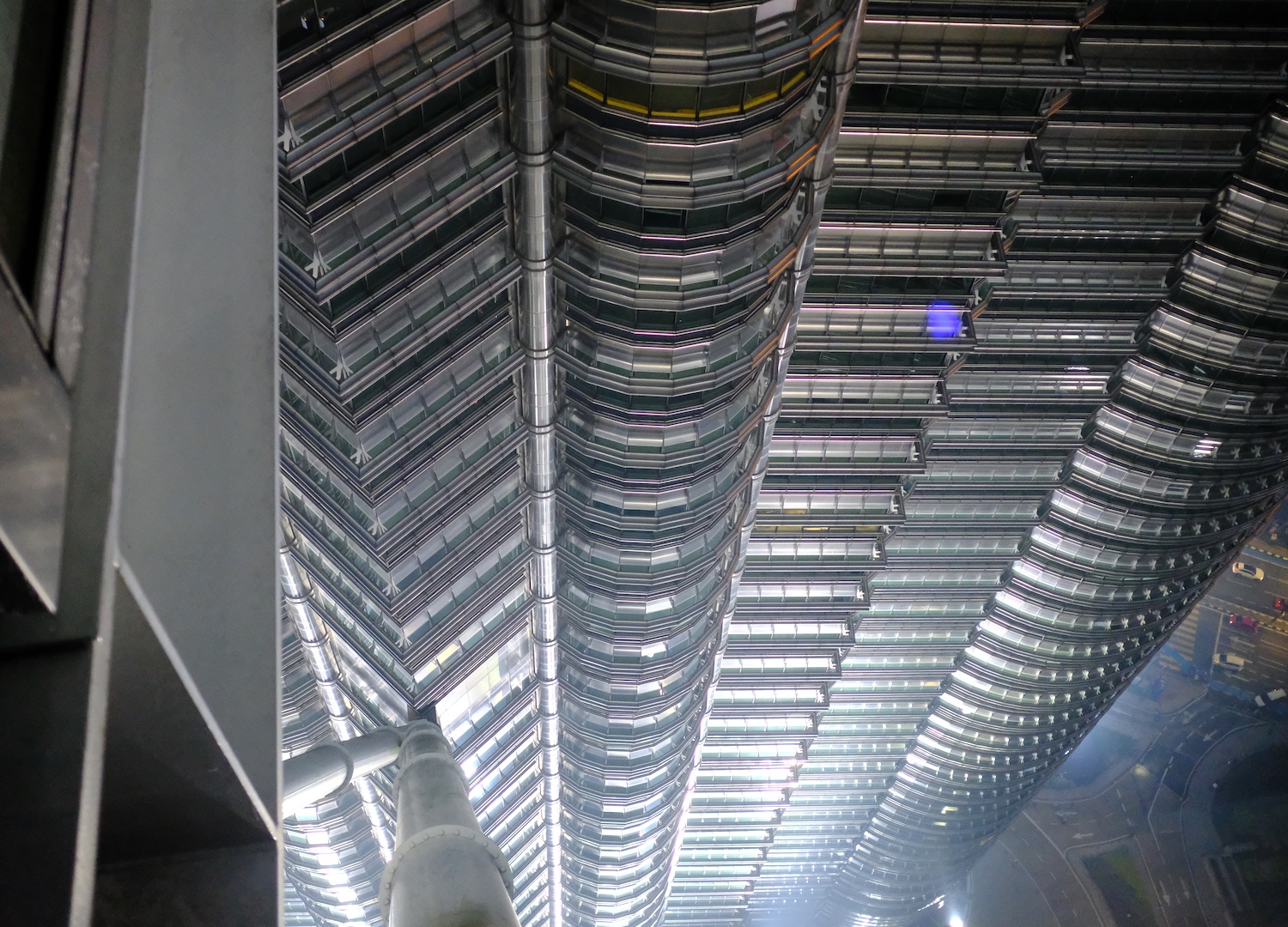
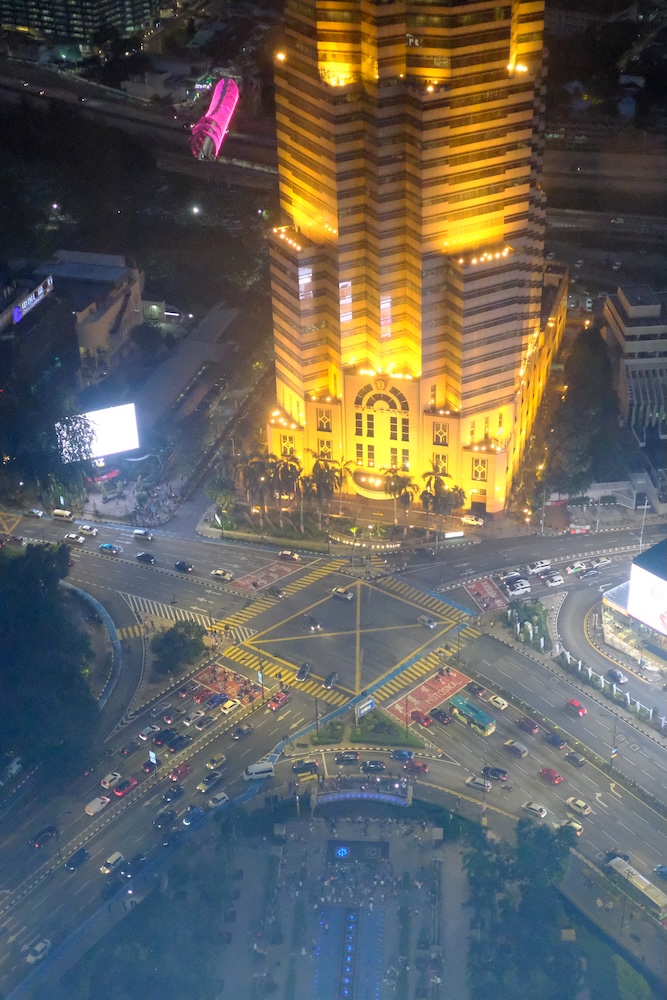
In the evening, after yet another delicious dinner, we decided to end the day in style by climbing the Skybridge that connects the Petronas Twin Towers. Knowing that access to the structure is in high demand in the evening, we had bought the ticket online well in advance.
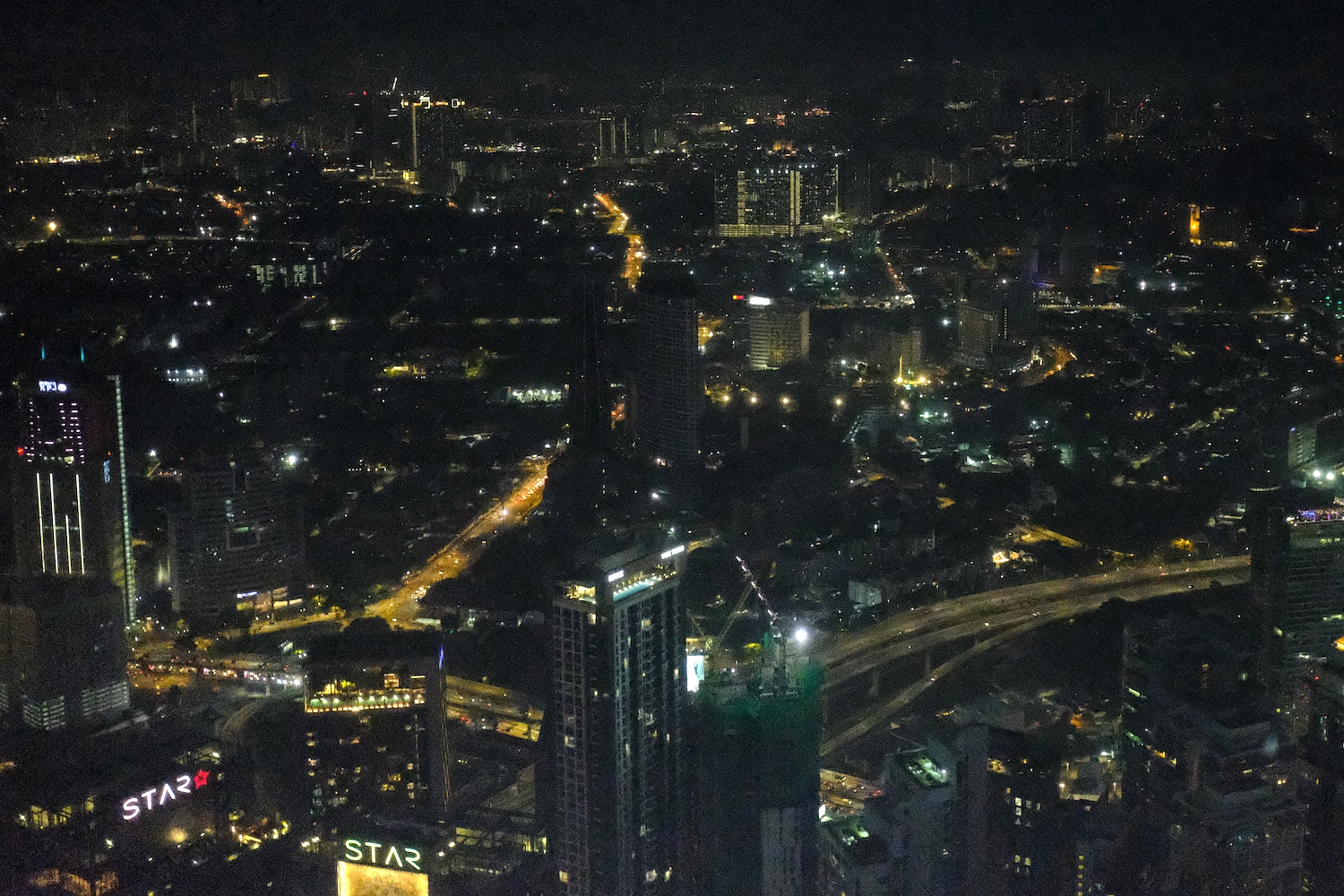
From the top of the Skybridge the city looked like a glittering mosaic. The skyscrapers, festively lit, created a magical atmosphere, while the lights of the streets and traffic traced a luminous path that disappeared into the horizon.
Brickfields: The heart of Kuala Lumpur's Indian community
On the last day of our stay in Kuala Lumpur we decided to visit Brickfields, where the Indian community lives. We strolled through the lively streets of Jalan Tun Sambanthan and observed the unusual architecture of the buildings, which with their lively facades and intricate decorations create an atypical urban landscape.
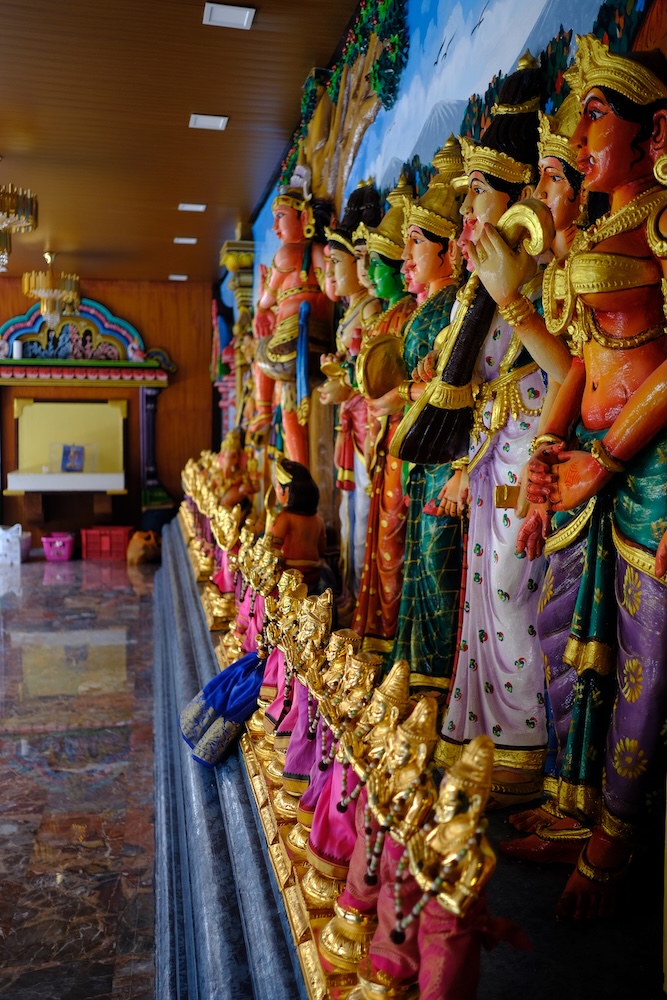
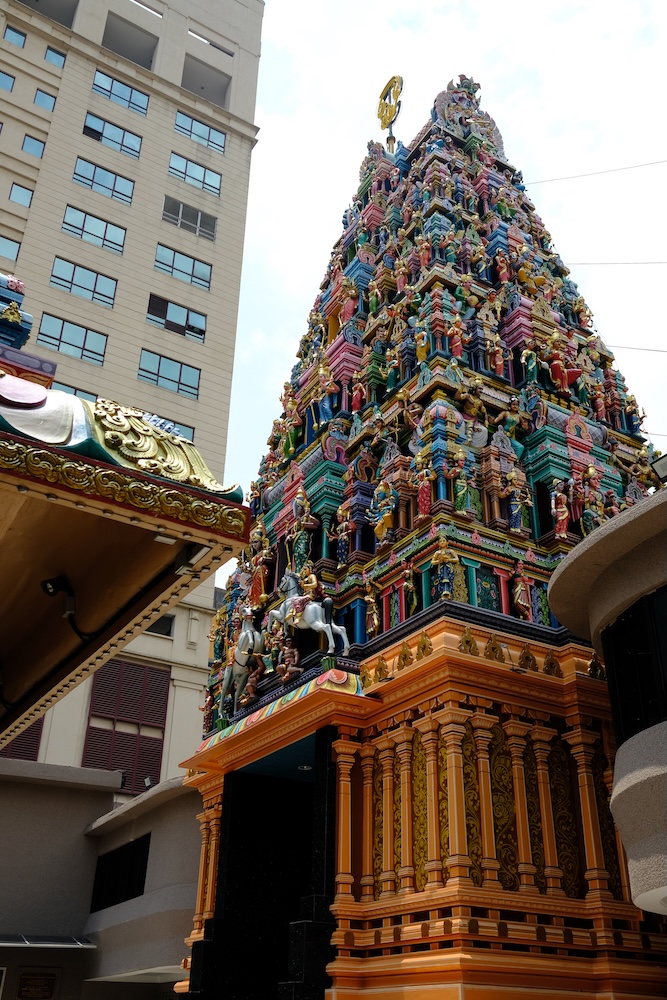
The Hindu temples, with their colorful towers and elaborate sculptures, are the undisputed protagonists of the neighborhood. One of the most memorable moments of our visit was witnessing a religious ceremony at one of the many Hindu temples. The atmosphere was full of devotion, the chants and mantras created a hypnotic melody, and the offering of flowers and incense enveloped everything in an intense perfume.
The Tokong Thean Hou temple
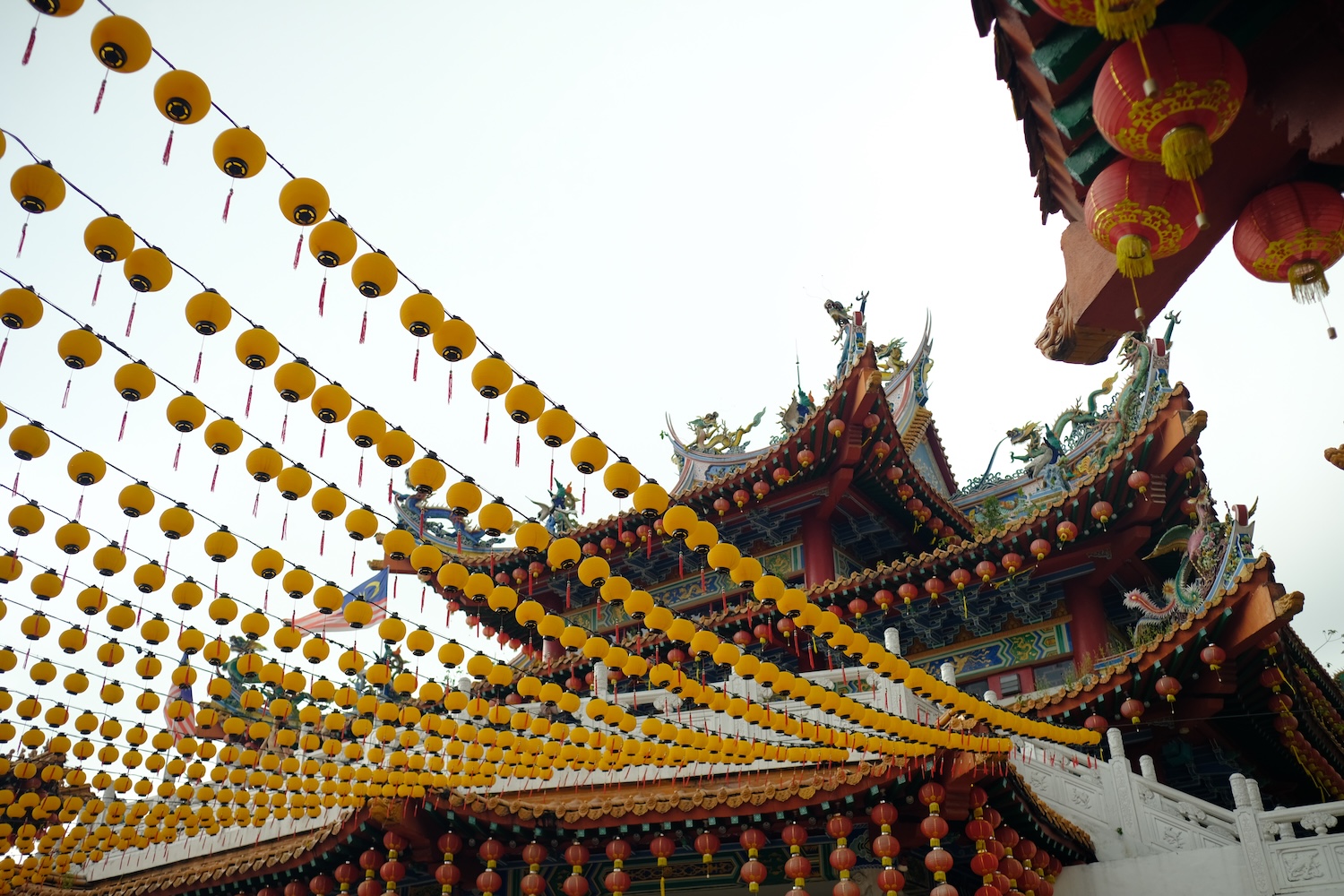
Leaving the lively Indian neighborhood behind, our next stop was the large Tokong Thean Hou temple, which sits on a hill.
The temple is dedicated to the Chinese goddess of the sea, Mazu, protector of sailors and fishermen.
Built in the 1980s, this 6-level temple is one of the largest of its kind outside of China.
It has elements of Buddhism, Confucianism and Taoism, which combined with modern architectural techniques make it one of the most visited destinations in the city.
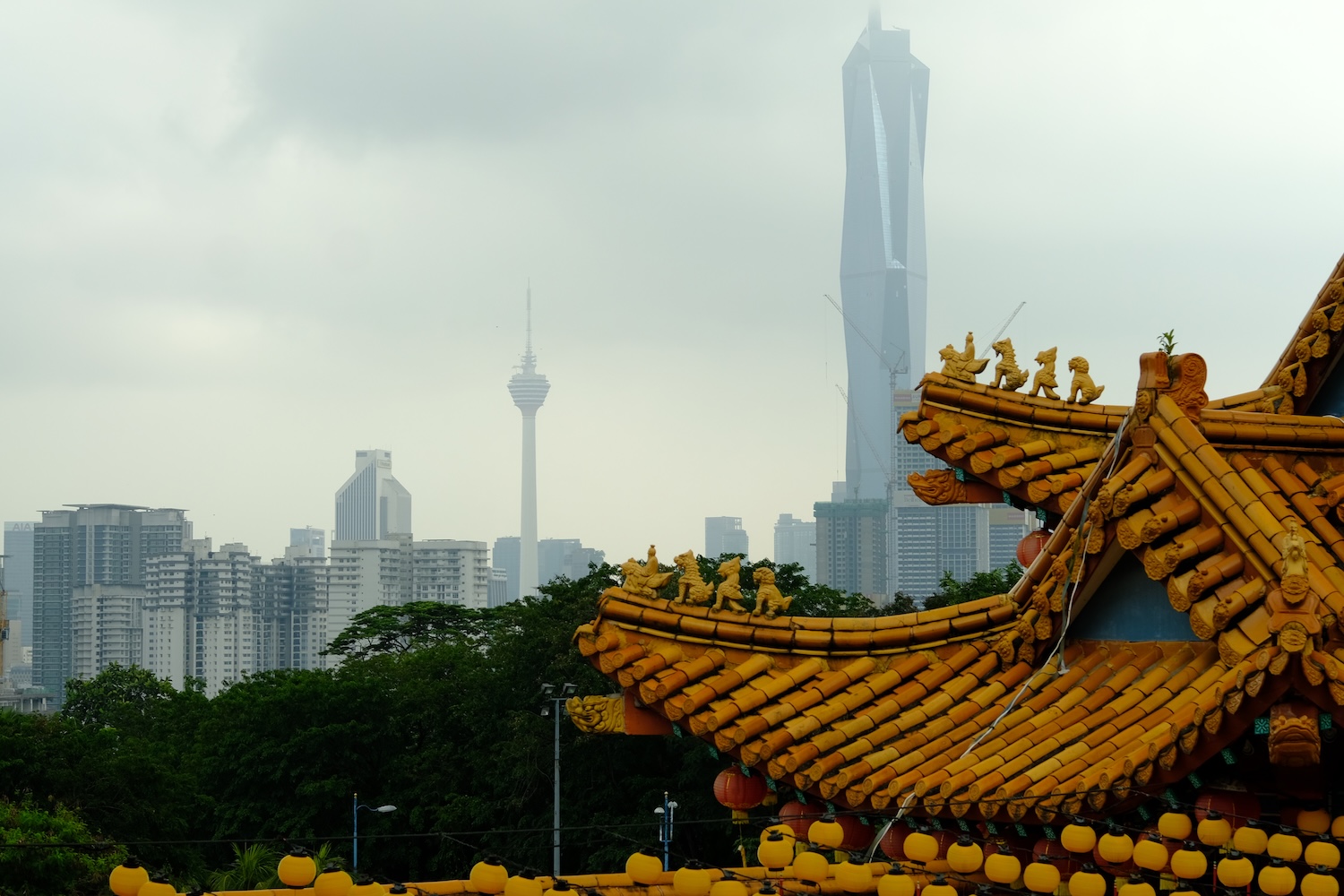
The yellow lanterns were arranged in neat rows across the roofs of the temple, and the wind moved them slightly, adding a touch of dynamism and mysticism to the entire composition.
Inside, Chinese tradition was expressed in all its splendor, with elaborate statues, ornamental ceiling carvings and intricate embellishments.
What is most striking is the view from the upper terraces, from which you can observe the skyline of the city center alternating with the eastern curves of the temple roofs.
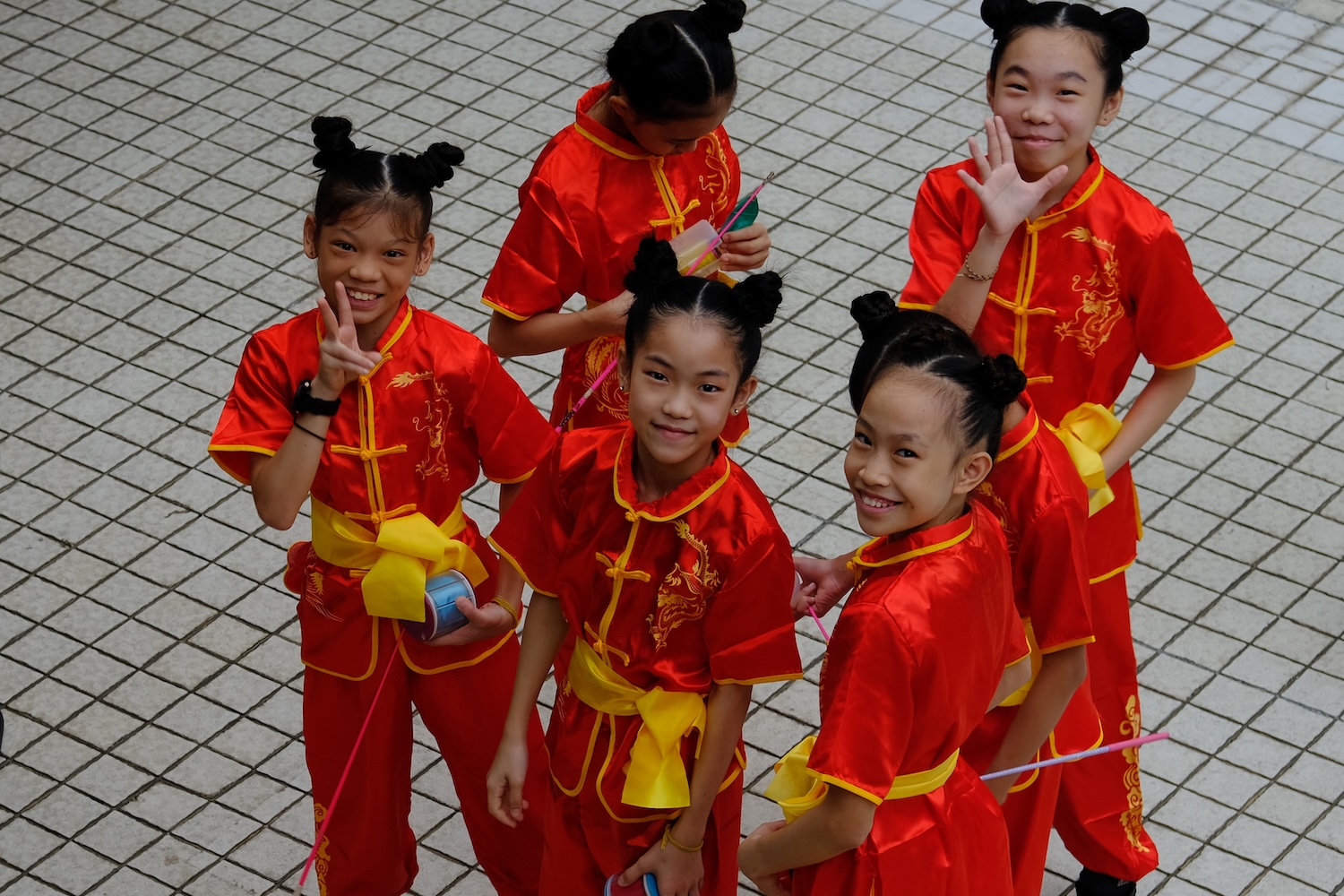
In this place of peace, between one photo and another, we couldn't help but notice some little girls dressed in traditional clothes in bright colors smiling at us. Knowing that we would be leaving the next day, we interpreted that small gesture as a sweet goodbye from the city: it was as if Kuala Lumpur, through them, wanted to leave us an indelible memory of its hospitality.
That's all! If you like this text or have any question, leave a comment below.



Comments powered by CComment